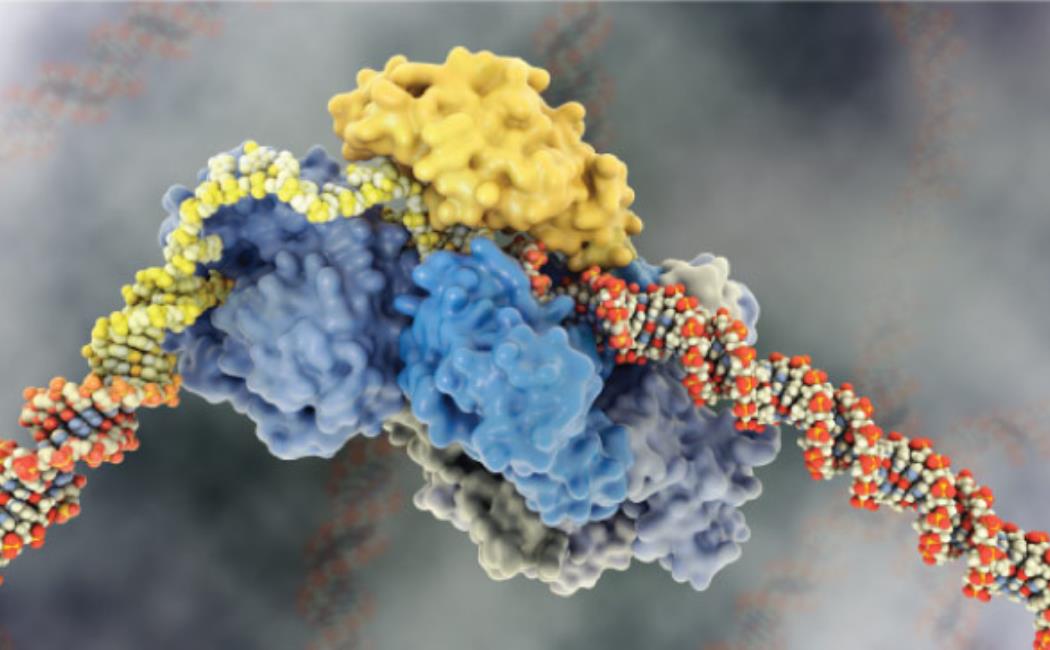
Explaining the DNA repair mechanism
08 December, 2022
Nucleotide excision repair (NER) is a critical DNA repair pathway that plays a key role in maintaining transcription and genome integrity by removing bulky DNA lesions.
The key steps in the NER reaction include damage recognition, strand separation by the molecular motor TFIIH and excision of about 30 nucleotides by the nucleases XPG and XPF, which removes the damage and allows transcription to proceed without DNA damage signaling occurring. But how these steps are coordinated and regulated is not well understood.
Now, a significant advance in showing how the NER mechanism is controlled at the molecular level has been identified in a study by an international team led by researchers at KAUST and the University of Texas MD Anderson Cancer Center.
Click here to read the full story.
Image: Illustration of the nucleotide excision
repair mechanism: The TFIH (in blue) locates the damaged part of the DNA
strand, which signals the XPG complex (in yellow) to excise it from the
healthy DNA strand.
© 2022 KAUST; Heno Hwang